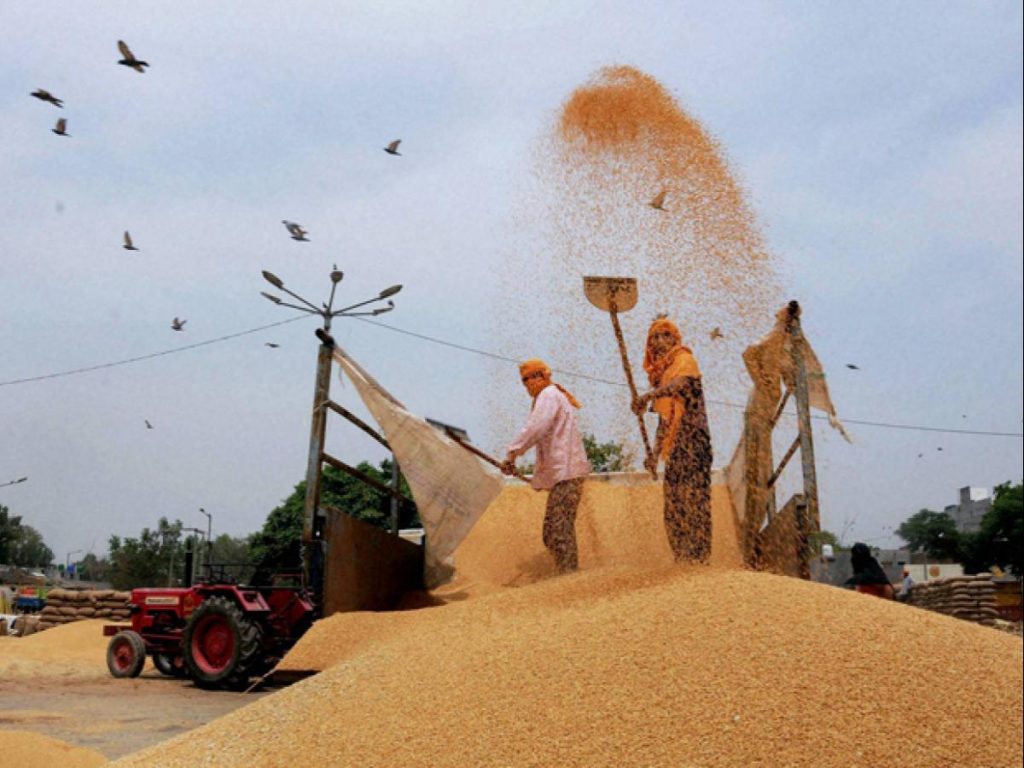India has made significant progress toward being a self-sufficient food producer after being a net food importer in the 1960s. The UN’s Food and Agriculture Organization (FAO) reports that India is the second-biggest producer of rice, wheat, sugarcane, groundnuts, vegetables, and fruits. It is the largest producer of milk and pulses and a significant producer of plantation crops, spices, fish, poultry and livestock. It ranks first or second among several non-food crops, including cotton and jute. This success has also created a crisis of abundance as the food supply chain infrastructure needs significant strengthening to manage excess production.
HOW MUCH FOOD IS LOST BETWEEN HARVEST AND RETAIL?
Any food that is discarded, burned, or otherwise disposed of after harvesting along the food supply chain is referred to as food loss. This loss excludes the retail level and any waste that is applied to other productive uses, such as the production of feed or seed. To highlight the different terms, while “food waste” occurs after the food reaches the retailer or customer, “food loss” occurs during or shortly after harvest
As per an estimate, during or immediately after harvest, globally up to $600 billion worth of food is lost on farms or in their vicinity. FAO sets India’s food loss and waste at 40%, whereas the government-owned Food Corporation of India (FCI) puts it at over 15%.
Comprehensive studies on agri-losses have been undertaken in India by the Central Institute of Post Harvest Engineering and Technology, Ludhiana (CIPHET), a unit of the Indian Council of Agricultural Research (ICAR). Using production data from 2012–13 at 2014 wholesale prices, CIPHET estimated the annual value of harvest and post-harvest losses of primary agricultural produce at the national level at Rs. 92,651 Crore.
COLD STORAGE CHALLENGES
In a diverse country like India, food is produced in one region and then shipped all over the nation. For instance, grains are grown in Maharashtra and transported nearly throughout India. The government plays a significant role, purchasing around 75 million tonnes of the 300 million tonnes of grains produced in India through the MSP mechanism. A significant quantity of these grains is stored in traditional godowns or outside in the open shade leading to substantial losses to the exchequer.
India had 8,186 cold storage facilities with a combined 374 lakh million tonnes capacity as of September 2020. Bengal and Uttar Pradesh account for roughly 65% of this. Potatoes use about 75% of the cold storage space. According to estimates, India loses between 30 and 40 percent of its fruits and vegetables yearly due to inadequate cold storage facilities. This is significant as we are striving for nutritional security, especially for the vulnerable sections of the population.
IMPROVING INDIA’S POST-HARVEST SUPPLY CHAIN INFRASTRUCTURE
India’s hot and humid weather generally makes maintaining cold storage facilities more challenging. The problems magnify with extended heat waves and a rise in the frequency of extreme weather phenomena, including floods, droughts, and cyclones. We need a complete upgradation of storage facilities (especially in rural areas) that can minimize power and water usage while reducing post-harvest losses. One way to achieve this is by expanding access to finance for climate resilient technology adoption for storage facilities.
The Ministry of Food Processing Industries has been implementing several schemes to reduce losses in agricultural produce’s supply chain and improve the existing food processing infrastructure. These schemes include Mega Food Parks, Integrated Cold Chain, Value Addition and Preservation Infrastructure, and Setting Up/Modernization of Abattoirs.
CONCLUSION
Recent innovations and modern solutions could help overcome food insecurity, enhance access to nutrition and ensure long-term food sector sustainability. All stakeholders must collaborate to encourage private sector innovations that can share the burden of improving agricultural resilience and complement public sector projects.
For example, Cooling-as-a-service is a global innovation where local cold-chain technology providers own, maintain, and operate cooling systems in a decentralized manner. In India, this innovation has been initiated through the Your Virtual Cold Chain Assistant program, conceptualized to minimize post-harvest losses by decentralizing cold storage facilities.
The Indian government introduced the Agriculture Infra Fund (AIF) on July 8, 2020, as a long-term debt financing plan for developing post-harvest management infrastructure and community farm assets. The government has initiated an action plan to invest about Rs. 9,200 crore over the following four to five years to facilitate the construction of wheat silos with 11-mt capacity using the PPP mode at 249 locations throughout the nation. These are significant steps on road to minimizing food loss.
https://www.fortuneindia.com/long-reads/can-india-be-a-global-food-bowl/109640
https://pib.gov.in/newsite/PrintRelease.aspx?relid=148566
https://pib.gov.in/PressReleasePage.aspx?PRID=1658114
https://www.un.org/en/observances/end-food-waste-day
https://www.orfonline.org/expert-speak/minimising-losses-to-achieve-agricultural-resilience/
https://www.financialexpress.com/economy/plans-afoot-to-build-3-4-mt-silos-under-ppp-mode/2610149/

